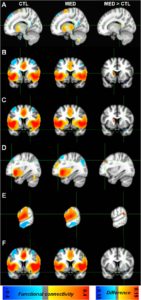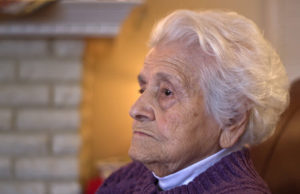Reduce Stress and Improve Autonomic Nervous System Function with Tai Chi or Yoga
By John M. de Castro, Ph.D.
“The rate of individuals suffering from autonomic nervous system dysfunctions is fast on the rise, due to our high stress and stimulative 21st-century lifestyles. However unknown to many practitioners, there are several natural therapies which are proven to help support the balance of the autonomic nervous system such as meditation and often have fewer side-effects and are better tolerated than many pharmaceutical medications.” – NaturalHealthBlogger
There is an accumulating volume of research findings to demonstrate that Mind-body practices have highly beneficial effects on the health and well-being of humans. These include yoga, tai chi, and qigong, among many others. Because of their proven benefits the application of these practices to relieving human suffering has skyrocketed. Tai Chi has been practiced for thousands of years with benefits for health and longevity. Tai Chi training is designed to enhance function and regulate the activities of the body through regulated breathing, mindful concentration, and gentle movements. Yoga practice has been shown to have a large number of beneficial effects on the psychological, emotional, and physical health of the individual and is helpful in the treatment of mental and physical illness.
One way that these Mind-body practices may have their beneficial effects is by providing balance in the autonomic nervous system. The sympathetic division underlies activation while the parasympathetic division underlies relaxation. When these divisions are out of balance the individual may be overly stressed or overly sedentary. Appropriate balance is important for health and well-being. A measure of balance is provided by the variability of the heart rate. Moderated heart rate variability reflects balance in the autonomic nervous system.
In today’s Research News article “Effects of Mind⁻Body Exercises (Tai Chi/Yoga) on Heart Rate Variability Parameters and Perceived Stress: A Systematic Review with Meta-Analysis of Randomized Controlled Trials.” (See summary below or view the full text of the study at: https://www.ncbi.nlm.nih.gov/pmc/articles/PMC6262541/ ), Zou and colleagues review, summarize and perform a meta-analysis of the published randomized controlled trials investigating the effects of tai chi and yoga on a measure of autonomic balance; heart rate variability. They discovered 17 research publications reporting on research studies of fair to high quality.
They report that after both tai chi or yoga practice there are large significant reductions in perceived stress levels. Also, after practice there were small, albeit significant reductions in the normalized low-frequency component of heart rate variation and the ratio of low frequency to high frequency variations and significant increases in the normalized high-frequency component. These components are thought to be indicative of sympathetic and vagal modulation, sympathetic modulation, and sympathetic activity. These effects on heart rate variation components suggest that after tai chi and yoga practice there is better balance in the autonomic nervous system. Additionally, the published studies indicate that while both tai chi and yoga practice decrease stress and improve autonomic balance, that a minimum of 90 minutes per week of yoga practice produces better results.
These results are interesting and important. They suggest that tai chi and especially yoga practice promote health and well-being and may do so by reducing perceived levels of stress and balancing the autonomic nervous system. Yoga practice is generally a more intense exercise and it is likely that this greater intensity of exercise is responsible for yoga’s superiority. But Tai Chi is gentle, safe, and easily practiced conveniently without a professional teacher. Hence, it may be better adapted to integration into the daily lifestyle of the individual.
So, reduce stress and improve autonomic nervous system function with tai chi or yoga.
“Practicing yoga is an excellent way to stimulate and bring circuitry to the important parasympathetic nervous system. The gentle movements and slow rhythmic breathing slow the heart and blood pressure. Yoga redirects blood flow to the reproductive and digestive organs. Regular yoga practice results in a sustained state of strength and health, as well as mind and body balance. Tai Chi is widely used for its variety of health benefits and its adaptability to any age or level of fitness. It is an effective technique that enhances your body’s ability to use the mind to get in touch with the body through the nervous system. The results of continued practice include increased awareness, strengthened nerves, and better coordination, to name a few.” – Aleksandra Eifler
CMCS – Center for Mindfulness and Contemplative Studies
This and other Contemplative Studies posts are also available on Google+ https://plus.google.com/106784388191201299496/posts and on Twitter @MindfulResearch
Study Summary
Zou, L., Sasaki, J. E., Wei, G. X., Huang, T., Yeung, A. S., Neto, O. B., Chen, K. W., … Hui, S. S. (2018). Effects of Mind⁻Body Exercises (Tai Chi/Yoga) on Heart Rate Variability Parameters and Perceived Stress: A Systematic Review with Meta-Analysis of Randomized Controlled Trials. Journal of clinical medicine, 7(11), 404. doi:10.3390/jcm7110404
Abstract
Background: Heart rate variability (HRV) as an accurate, noninvasive measure of the Autonomous Nervous System (ANS) can reflect mental health (e.g., stress, depression, or anxiety). Tai Chi and Yoga (Tai Chi/Yoga), as the most widely practiced mind–body exercises, have shown positive outcomes of mental health. To date, no systematic review regarding the long-lasting effects of Tai Chi/Yoga on HRV parameters and perceived stress has been conducted. Objective: To critically evaluate the existing literature on this topic. Methods: Five electronic databases (Web of Science, PubMed, Scopus, SportDiscus and Cochrane Library) were searched from the start of the research project to July 2018. Study selection, data extraction, and study quality assessment were independently carried out by two reviewers. The potentially identified randomized controlled trials (RCT) reported the useful quantitative data that were included only for meta-analysis. Results: meta-analysis of 17 medium-to-high quality RCTs showed significantly beneficial effects on HRV parameters (normalized low-frequency, Hedge’s g = −0.39, 95% CI −0.39 to −0.56, p < 0.001, I2 = 11.62%; normalized high-frequency, Hedge’s g = 0.37, 95% CI 0.22 to −0.52, p < 0.001, I2 = 0%; low-frequency to high-frequency ratio, Hedge’s g = −0.58, 95% CI −0.81 to −0.35, p < 0.001, I2 = 53.78%) and stress level (Hedge’s g = −0.80, 95% CI −1.17 to −0.44, p < 0.001, I2 = 68.54%). Conclusions: Stress reduction may be attributed to sympathetic-vagal balance modulated by mind–body exercises. Tai Chi/Yoga could be an alternative method for stress reduction for people who live under high stress or negative emotions.
https://www.ncbi.nlm.nih.gov/pmc/articles/PMC6262541/









